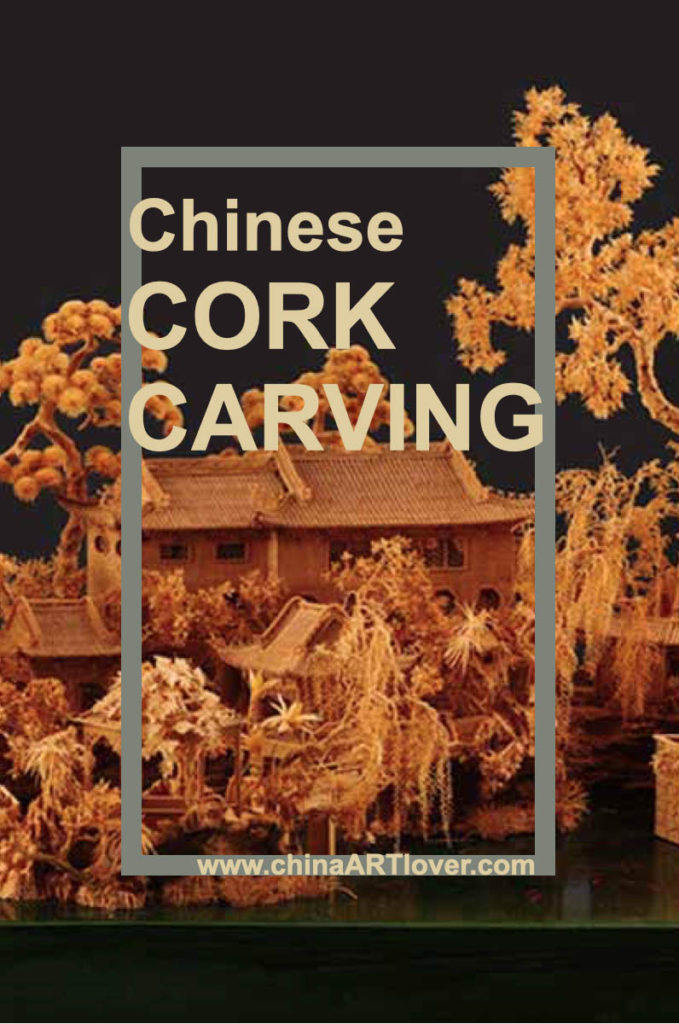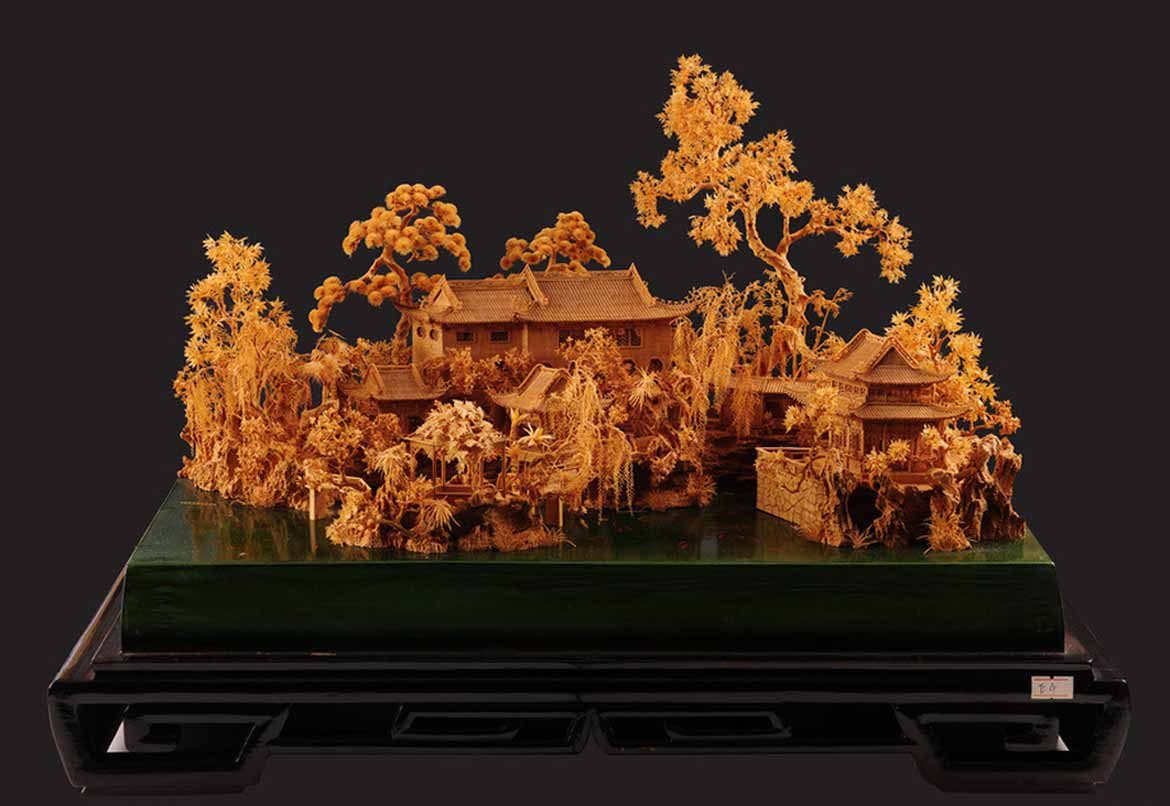What is Chinese cork art (or Chinese cork carving)?
Chinese cork carving is also known as cork sculpture and a traditional Chinese artwork depicting intricate landscapes and their wild species. The cork (from cork bark of trees) is cut, carved, and glued together into pictures. After that, the arrangement is wood-framed with clear glass protection. Very often the frame is lacquer painted in black.
Cork carving pictures
Here you can find some nice and detailed pictures of bigger cork carving dioramas. For more pictures check out my Pinterest board about Chinese cork carving.
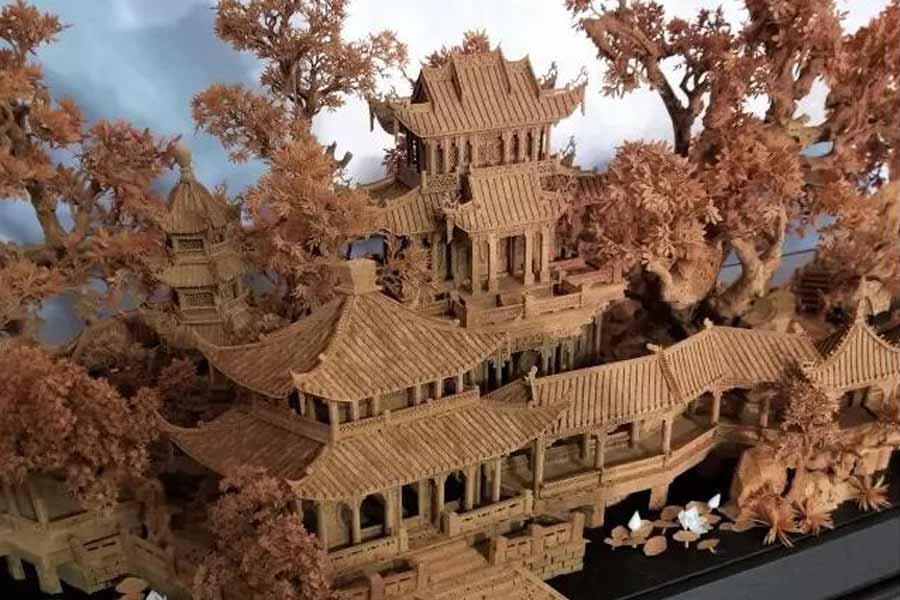
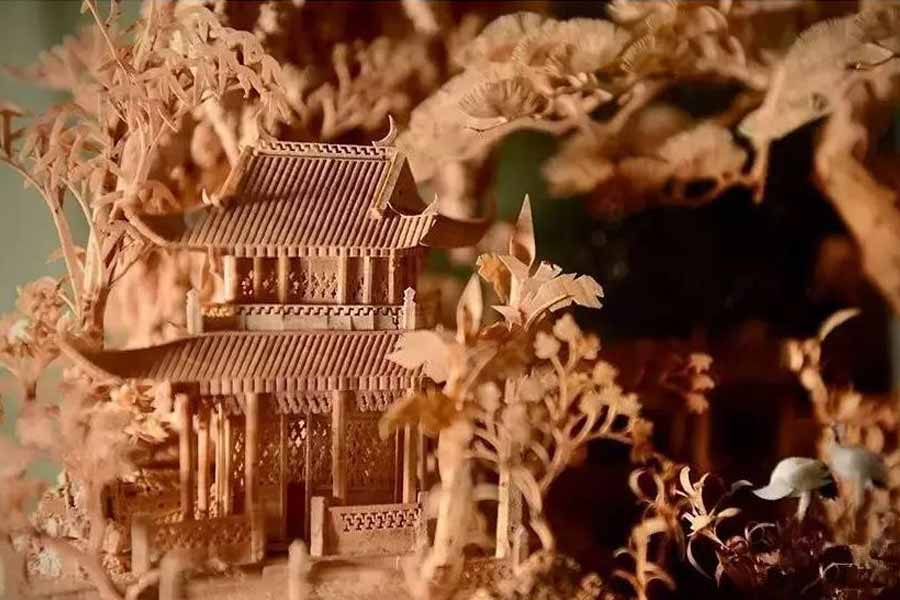
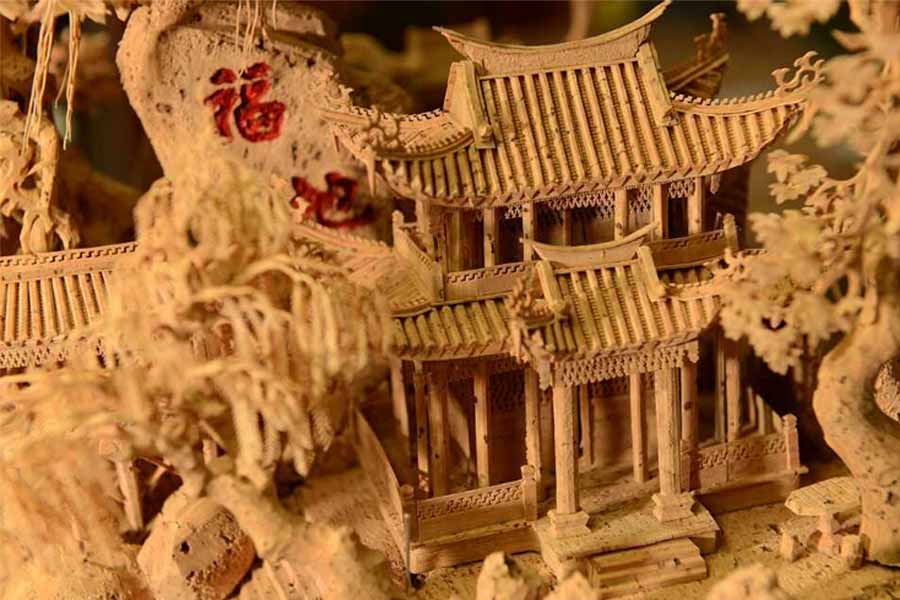

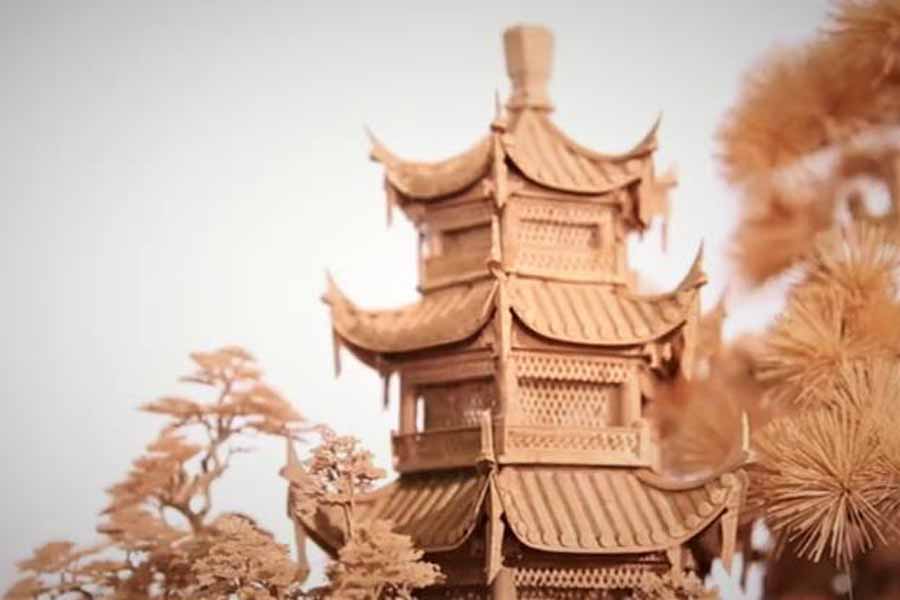
Cork carving history
Cork carving or “Ruanmu Hua” (软木画) is actually a quite modern art and not really an ancient art as most people might think. The art started back about a hundred years ago when the Chinese wood carving artist Wu Qiqi from Xiyuan village in Fuzhou was inspired by a picture that travelers brought back from Germany in 1914. It was said to be a kind of “picture in wood” that inspired the local artist to use their own material to apply their traditional carving skills.
They used a sharp knife as a pen, engraved and carved flowers, trees, pavilions, trestle bridges and boats. Then they made birds and animals such as cranes and peacocks with the rice paper plant. In accordance with the idea, they stuck all the elements together with white glue, forming a unique style of art today known as the Chinese cork carving tradition.

Motives of Chinese carved cork dioramas
Cork carving, while popular for its sheer beauty and mind-boggling intricacy, is a reflection of philosophy and folklore. Most cork sculptures are pastoral scenes that incorporate trees, buildings, and wildlife. In fact, the importance of such landscape scenery in Chinese arts (Like Gua Hua Painting) has its roots in Taoism.
Mountains are rendered fading into the heavens to seemingly become one with each other. Elements of humanity, such as a house, a boat, or a bridge are peppered throughout the landscape. Thus earth, heaven and mankind are brought together in a single “path”, or “way”. The delicate art of cork carving epitomizes Taoist thought by utilizing the natural coarseness of cork to represent jagged mountain scenes. Yet the same material is used to create the smooth finely carved elements of buildings and trees.

Chinese cork carving value
Since there is no really antique market before 1914 prices are still moderate. However because of the tremendous amount of time needed to carve all the details of such a diorama the price is actually depending on size and detail. You can get a smaller piece of 10x20cm starting from 50 Dollar up to 50.000 Dollars for a big 1-2m size from a famous master.
Finally a short video about “Fuzhou Cork Paintings”
Like our story about Chinese art of cork carving? Follow us on Facebook and Instagram.
